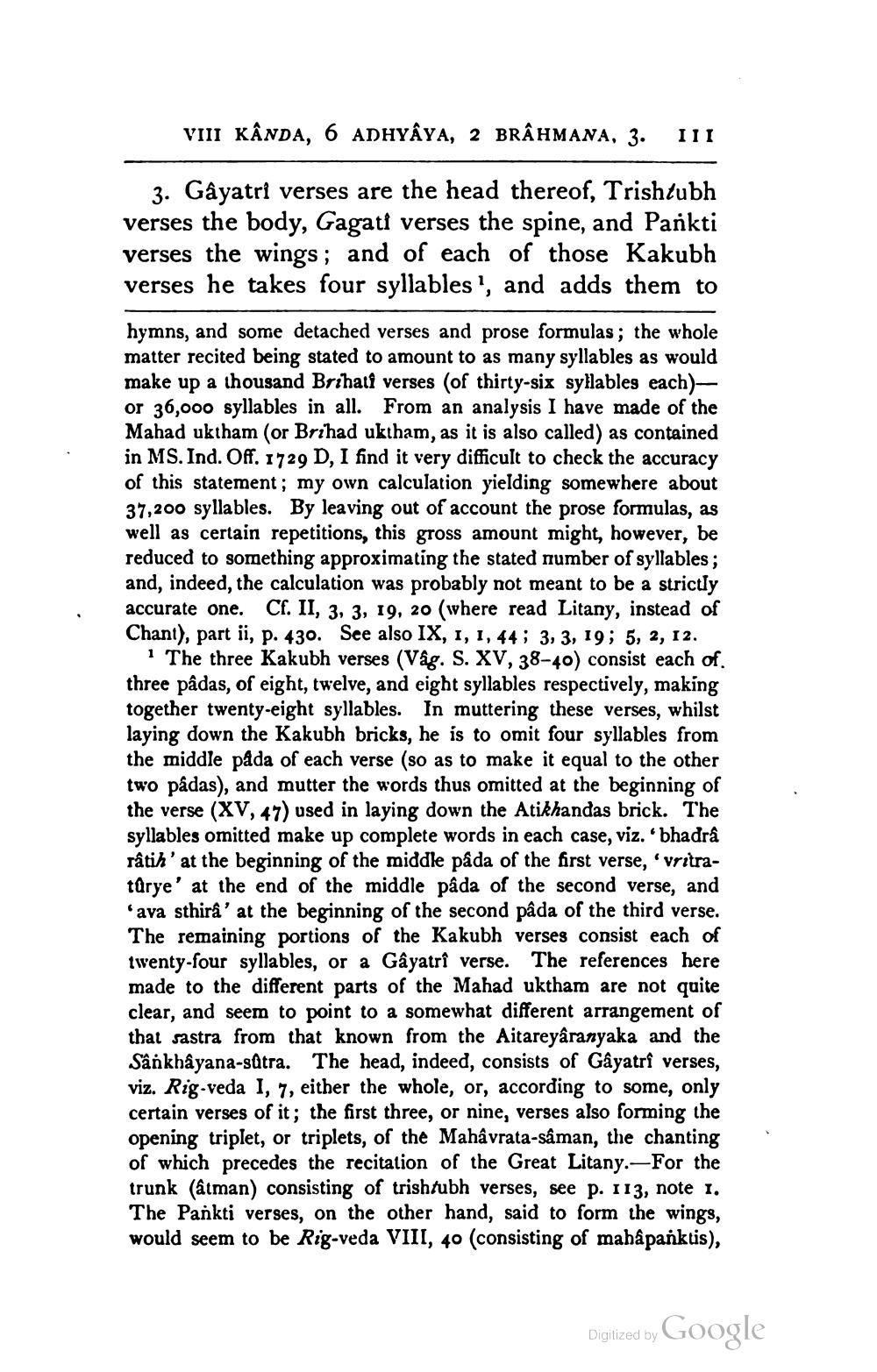________________
VIII KÂNDA, 6 ADHYÂYA, 2 BRÂHMANA, 3. III
3. Gayatri verses are the head thereof, Trishtubh verses the body, Gagati verses the spine, and Parkti verses the wings; and of each of those Kakubh verses he takes four syllables', and adds them to
hymns, and some detached verses and prose formulas; the whole matter recited being stated to amount to as many syllables as would make up a thousand Brihati verses (of thirty-six syllables each) - or 36,000 syllables in all. From an analysis I have made of the Mahad uktham (or Brihad uktham, as it is also called) as contained in MS. Ind. Off. 1729 D, I find it very difficult to check the accuracy of this statement; my own calculation yielding somewhere about 37,200 syllables. By leaving out of account the prose formulas, as well as certain repetitions, this gross amount might, however, be reduced to something approximating the stated number of syllables; and, indeed, the calculation was probably not meant to be a strictly accurate one. Cf. II, 3, 3, 19, 20 (where read Litany, instead of Chant), part ii, p. 430. See also IX, 1, 1, 44; 3, 3, 19; 5, 2, 12.
1 The three Kakubh verses (Vág. S. XV, 38-40) consist each of. three pâdas, of eight, twelve, and eight syllables respectively, making together twenty-eight syllables. In muttering these verses, whilst laying down the Kakubh bricks, he is to omit four syllables from the middle pâda of each verse (so as to make it equal to the other two padas), and mutter the words thus omitted at the beginning of the verse (XV, 47) used in laying down the Atikhandas brick. The syllables omitted make up complete words in each case, viz. 'bhadra râtih' at the beginning of the middle pâda of the first verse, vritratûrye' at the end of the middle pâda of the second verse, and 'ava sthira' at the beginning of the second pâda of the third verse. The remaining portions of the Kakubh verses consist each of twenty-four syllables, or a Gayatri verse. The references here made to the different parts of the Mahad uktham are not quite clear, and seem to point to a somewhat different arrangement of that sastra from that known from the Aitareyâranyaka and the Sânkhâyana-sätra. The head, indeed, consists of Gayatri verses, viz. Rig-veda I, 7, either the whole, or, according to some, only certain verses of it; the first three, or nine, verses also forming the opening triplet, or triplets, of the Mahâvrata-saman, the chanting of which precedes the recitation of the Great Litany.--For the trunk (åtman) consisting of trishtubh verses, see p. 113, note 1, The Pańkti verses, on the other hand, said to form the wings, would seem to be Rig-veda VIII, 40 (consisting of mahapanktis),
Digitized by Google




